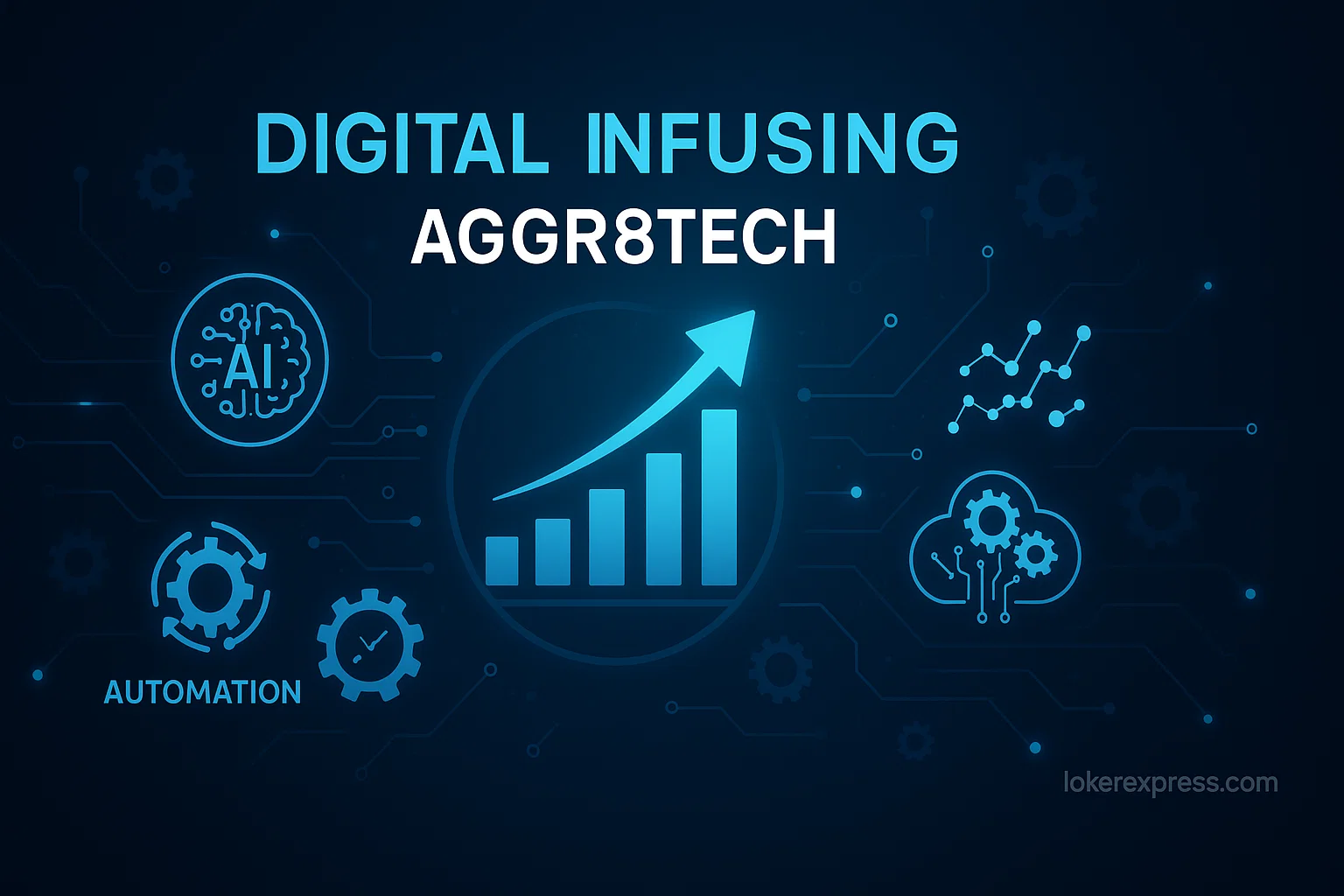Introduction: The Digital Revolution is Here
In the ever-changing world of technology, businesses are increasingly looking for ways to stay ahead of the curve. One of the most effective strategies today is digital infusing. This term may sound complex, but it simply refers to the process of integrating digital technologies deeply into the day-to-day operations of a company. It’s not just about adopting a new software tool; it’s about making digital transformation part of the core culture of your business. I’ve had the chance to work with businesses that have experienced this shift, and I can tell you—it’s a game changer.
I remember working with a small tech company a few years ago. At first, their website was functional, and they had a few basic tools in place, but the whole operation was still very manual. Customer service was slow, and data was scattered across different systems. Then, we introduced a more integrated, digital approach, incorporating everything from automated chat systems to real-time analytics. The change was incredible: not only did operations speed up, but the customer experience improved dramatically. This was my first real introduction to the power of digital infusing.
What Is Digital Infusing Aggr8Tech?
At its core, digital infusing is all about blending digital tools and technologies into the very fabric of a company’s operations. When you think of Aggr8Tech, a forward-thinking model for integrating technology, the idea is to use tools like AI, automation, cloud computing, and data analytics to enhance and improve every aspect of a business.
For example, one company I worked with used an AI-driven chatbot to handle routine customer inquiries. What made it powerful wasn’t just the chatbot itself—it was how it was connected to other systems. The bot didn’t just give generic answers; it accessed customer purchase history, it helped schedule service appointments, and it even escalated complex queries to human agents. This wasn’t just about introducing new tech; it was about infusing that tech into the entire workflow to improve efficiency.
Digital infusing also means making these changes at a deeper level. It’s about aligning the technology with the culture, processes, and goals of the business. It’s not enough to throw in a few new gadgets; you need to change how everything operates, from customer interactions to internal data management.
Why Does Digital Infusing Matter?
Now, you might be wondering why digital infusing is so important. Isn’t it just a trend? Well, it’s actually becoming a necessity for businesses to remain competitive. Customers expect quick responses, personalised experiences, and seamless interaction across all platforms. If you’re still relying on outdated methods or siloed systems, you’ll fall behind. I’ve witnessed this firsthand—companies that didn’t take the leap into digital transformation were often left struggling to catch up.
One of the first businesses I consulted with had a customer service department that relied on phone calls and emails. Simple requests often took days to process. But after implementing Aggr8Tech‘s digital tools—like automated workflows, customer data dashboards, and real-time communication options—the results were immediate. Response times dropped from days to minutes, and customer satisfaction soared. This is why digital infusing matters—it enhances the experience for both the customer and the company.
Key Components of Digital Infusing Aggr8Tech
When you look at digital infusing as a strategy, several key elements come into play. These are the components that, when combined, drive digital success.
Integration of Systems
The most important component is system integration. In many companies, various tools and technologies work independently, creating silos of information that are hard to access or share. Digital infusing breaks down these barriers. For instance, in one project, we linked a CRM system with an email marketing platform and customer service database. This integration allowed the business to create highly personalised customer campaigns based on real-time data.
By integrating systems, businesses not only improve efficiency but also enable faster decision-making. For example, when sales teams have immediate access to up-to-date customer data, they can make informed decisions during sales calls and avoid redundant communication.
Automation and Artificial Intelligence
Another critical element of digital infusing is automation. With the right tools, businesses can automate repetitive tasks, freeing up employees to focus on more creative or strategic work. For example, a client of mine in the healthcare sector automated the process of scheduling appointments and reminders. The result? Fewer missed appointments and reduced administrative workload for their staff.
The use of artificial intelligence is also growing in importance. AI-powered chatbots and predictive analytics help businesses understand customer behavior and improve decision-making. For instance, a retailer I worked with implemented a recommendation system that suggested products based on browsing behavior. The result was a significant increase in online sales. This was digital infusing at work—using AI to personalise the shopping experience and drive revenue.
The Benefits of Digital Infusing Aggr8Tech
There are many advantages to implementing digital infusing strategies. Here are the most notable ones:
- Improved Efficiency: Automation and integration streamline operations, reducing the time and effort spent on repetitive tasks. When processes are aligned and technology is seamlessly embedded, teams can work more efficiently.
- Better Customer Experiences: By leveraging data, AI, and integration, businesses can offer a more personalised and responsive experience. Customers today demand fast, tailored interactions, and digital infusing meets those expectations.
- Competitive Edge: Companies that successfully adopt digital infusing can outpace competitors. They can adapt quickly to market changes, react to customer feedback in real-time, and innovate faster.
Real-World Example: Digital Infusing in Action
Let me share an example from a project I worked on that illustrates the power of digital infusing. A client of mine in the retail space was struggling with slow inventory management and poor customer service. They had a basic website but lacked integration between their sales, warehouse, and customer support systems. We stepped in and helped them develop a solution that included an integrated e-commerce platform with real-time inventory tracking.
This allowed the business to offer more accurate delivery times, automated restocking notifications, and even personalized shopping experiences based on previous customer orders. The impact? Their customer retention rate increased by 30%, and customer complaints about delivery delays dropped significantly.
How to Implement Digital Infusing in Your Business
If you’re considering adopting digital infusing strategies for your business, here’s a step-by-step guide based on my experience:
- Assess Your Current Systems: Start by looking at the tools and technologies you’re currently using. Are they integrated? Do they talk to each other? What’s working well, and where are the bottlenecks?
- Define Clear Objectives: Before diving in, make sure you understand what you want to achieve. Are you aiming to improve customer service, streamline operations, or enhance sales? Having clear goals will guide your technology choices.
- Choose the Right Technologies: Select digital tools that align with your goals. Look for systems that can integrate with your existing setup and are scalable for future growth. For instance, choose a CRM platform that can easily sync with your website and analytics tools.
- Train Your Team: Digital infusing isn’t just about the technology—it’s also about the people using it. Invest in training so your team understands how to work with the new systems and how to leverage them for better results.
- Monitor and Adjust: Finally, track how well the new systems are working. Look for areas where processes can be improved and adjust your strategy as needed.
Challenges of Digital Infusing and How to Overcome Them
While digital infusing offers numerous benefits, it’s not without challenges. Here are a few common ones:
Resistance to Change
Many employees may be resistant to new technologies. It’s crucial to involve your team from the beginning and explain the benefits of the new systems. Offer training and support to make the transition as smooth as possible.
Data Integration Issues
Bringing together data from multiple sources can be tricky. However, modern tools and platforms are becoming more flexible and easier to integrate. Look for solutions that offer robust APIs or connectors to simplify the process.
Overcoming Technical Barriers
In some cases, businesses may face technical limitations, especially if they’re working with outdated systems. In such situations, consider phased implementation, where you gradually replace old systems with newer, more compatible technologies.
Read More: FintechAsia Error Codes: A Complete Guide from Real Experience
Conclusion: The Future of Digital Infusing Aggr8Tech
As we move further into the digital age, digital infusing will only become more important. Businesses that embrace this approach will not only survive but thrive in a rapidly evolving market. From improving customer service to automating operations and unlocking valuable insights from data, the possibilities are endless.
If you’re thinking about digital infusing Aggr8Tech into your company, remember that it’s a journey—not a one-off project. Start small, focus on integration, and don’t forget the human element. The future is digital, and those who infuse technology into every aspect of their business will lead the way.

